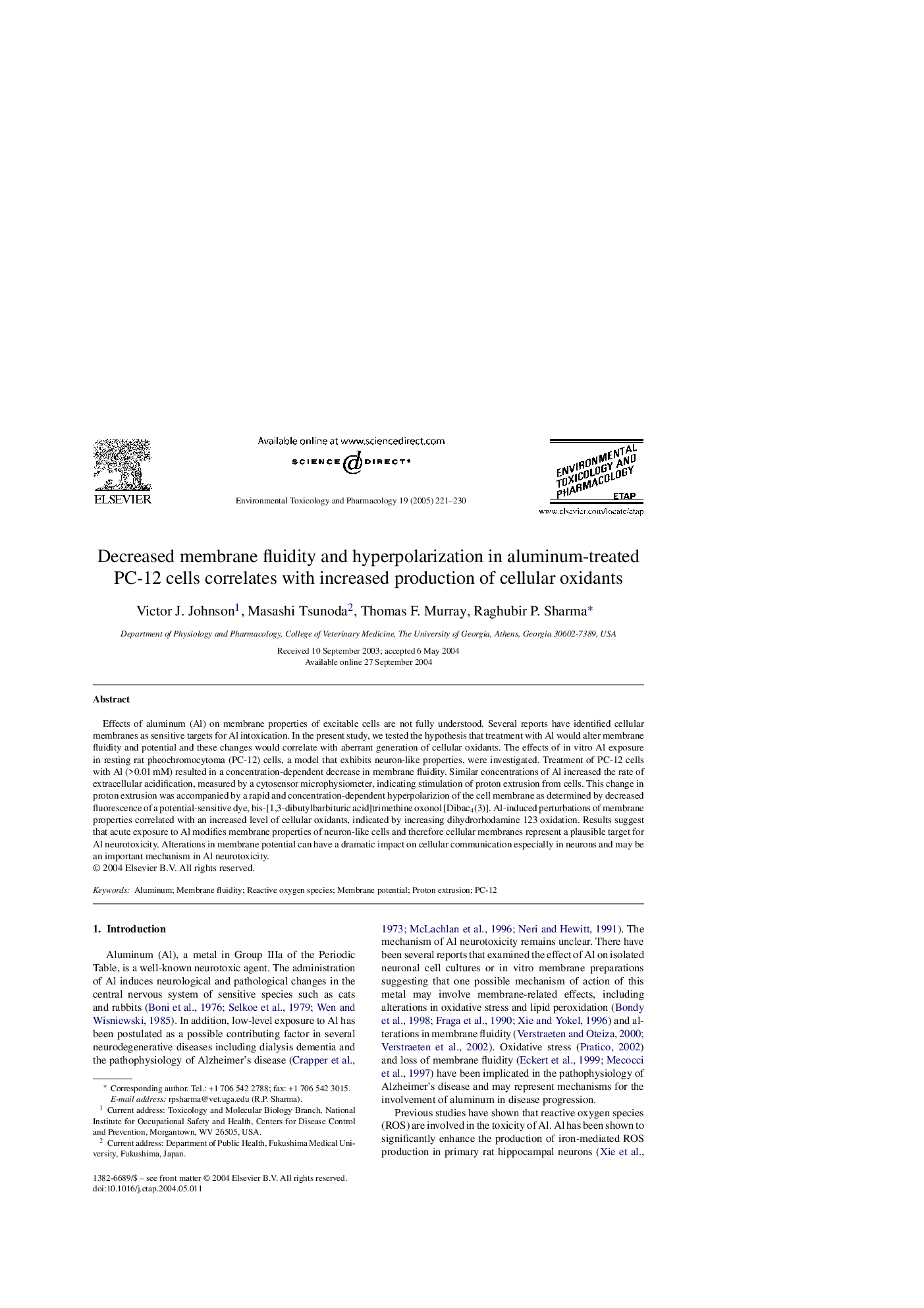| Article ID | Journal | Published Year | Pages | File Type |
|---|---|---|---|---|
| 9030165 | Environmental Toxicology and Pharmacology | 2005 | 10 Pages |
Abstract
Effects of aluminum (Al) on membrane properties of excitable cells are not fully understood. Several reports have identified cellular membranes as sensitive targets for Al intoxication. In the present study, we tested the hypothesis that treatment with Al would alter membrane fluidity and potential and these changes would correlate with aberrant generation of cellular oxidants. The effects of in vitro Al exposure in resting rat pheochromocytoma (PC-12) cells, a model that exhibits neuron-like properties, were investigated. Treatment of PC-12 cells with Al (>0.01Â mM) resulted in a concentration-dependent decrease in membrane fluidity. Similar concentrations of Al increased the rate of extracellular acidification, measured by a cytosensor microphysiometer, indicating stimulation of proton extrusion from cells. This change in proton extrusion was accompanied by a rapid and concentration-dependent hyperpolarizion of the cell membrane as determined by decreased fluorescence of a potential-sensitive dye, bis-[1,3-dibutylbarbituric acid]trimethine oxonol [Dibac4(3)]. Al-induced perturbations of membrane properties correlated with an increased level of cellular oxidants, indicated by increasing dihydrorhodamine 123 oxidation. Results suggest that acute exposure to Al modifies membrane properties of neuron-like cells and therefore cellular membranes represent a plausible target for Al neurotoxicity. Alterations in membrane potential can have a dramatic impact on cellular communication especially in neurons and may be an important mechanism in Al neurotoxicity.
Related Topics
Life Sciences
Environmental Science
Health, Toxicology and Mutagenesis
Authors
Victor J. Johnson, Masashi Tsunoda, Thomas F. Murray, Raghubir P. Sharma,
